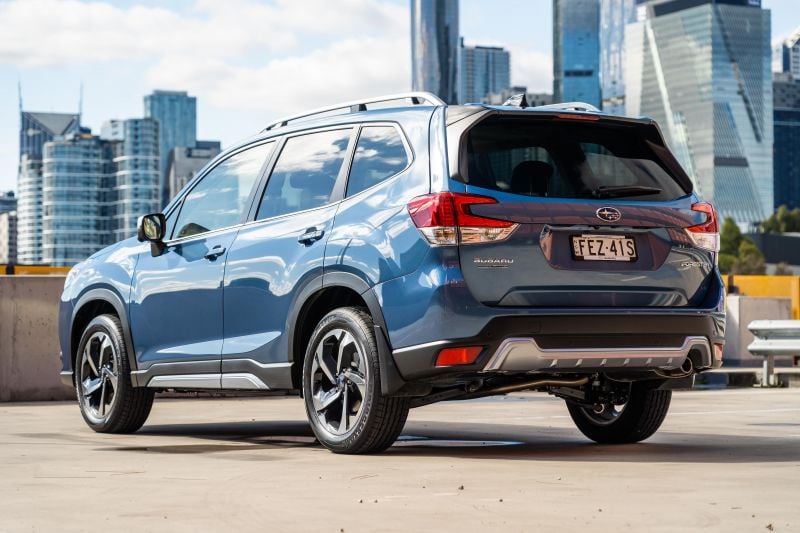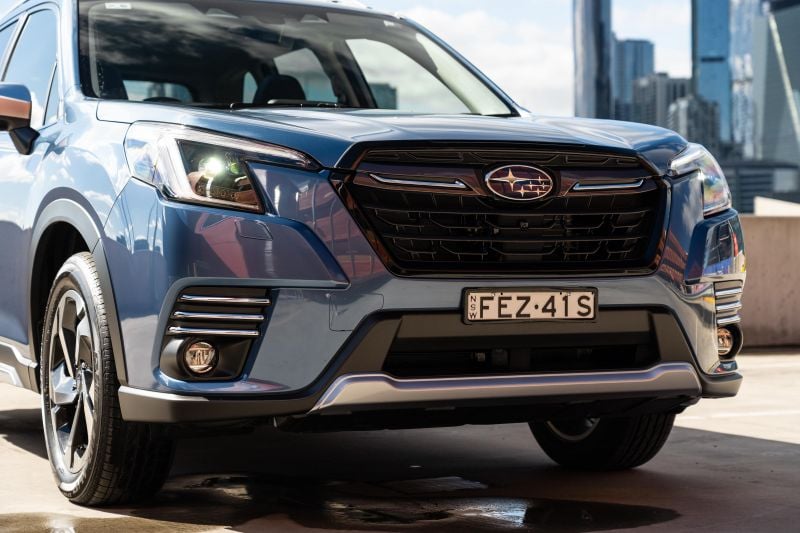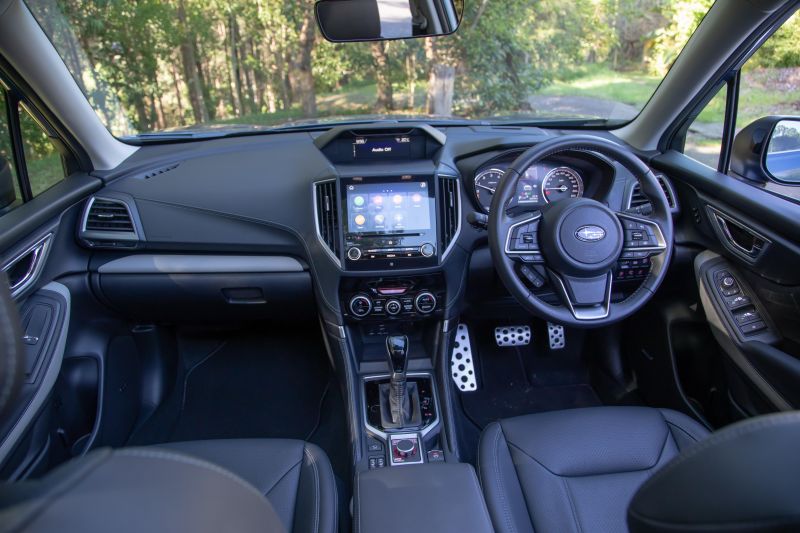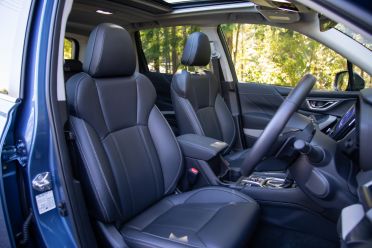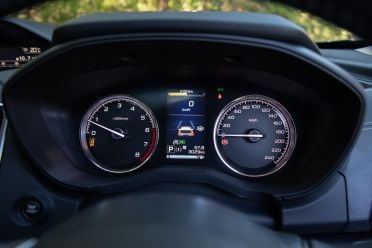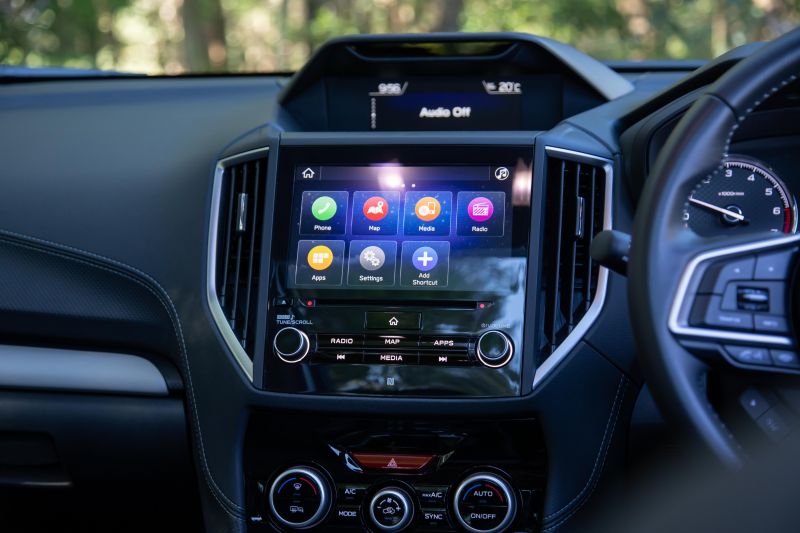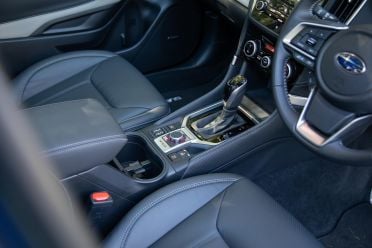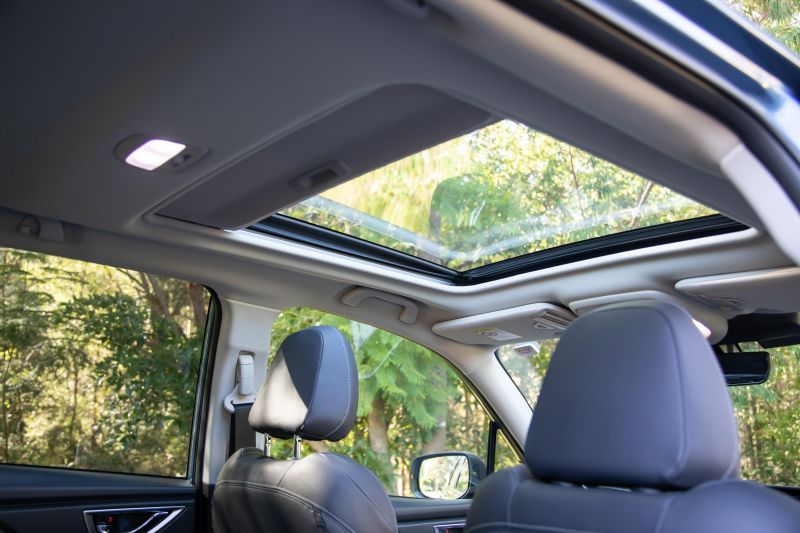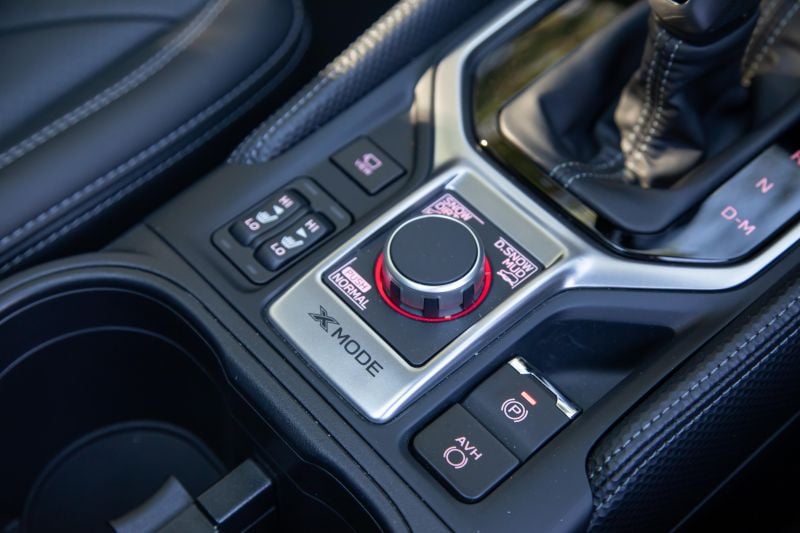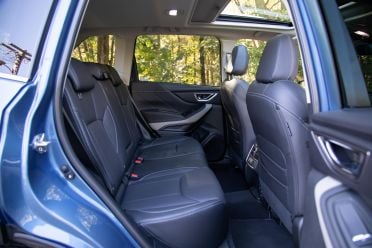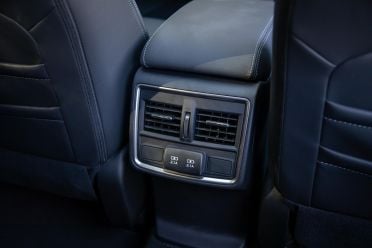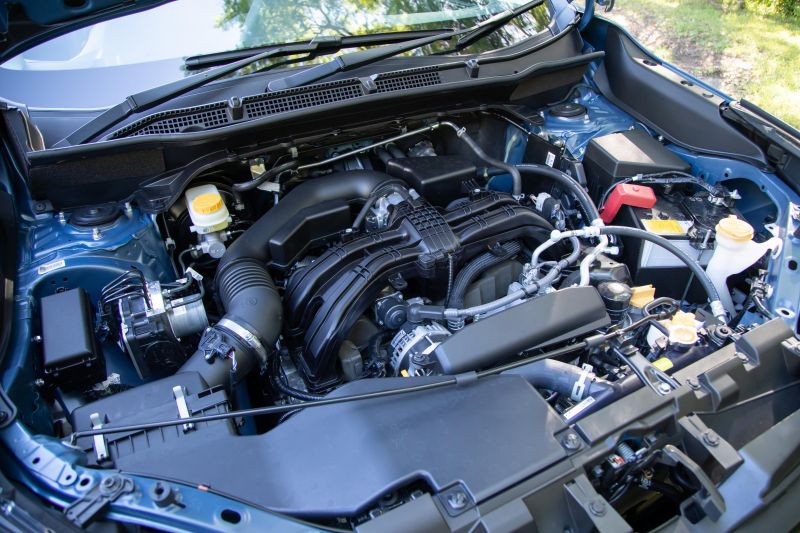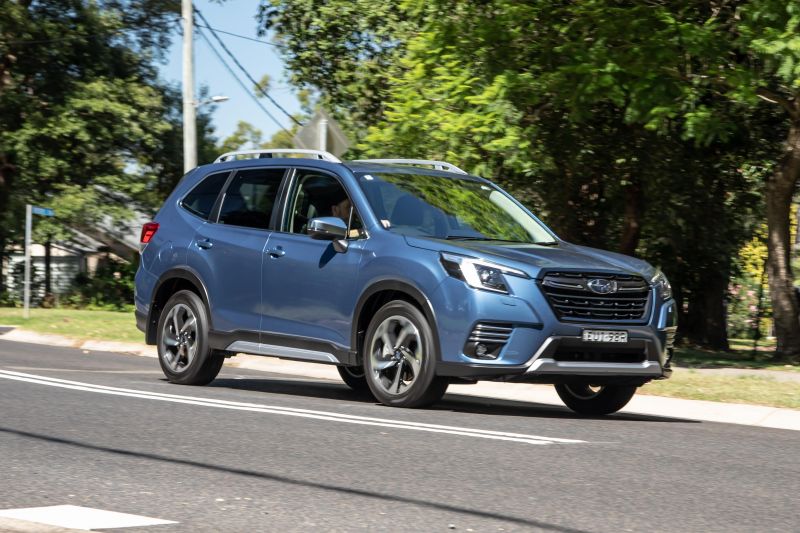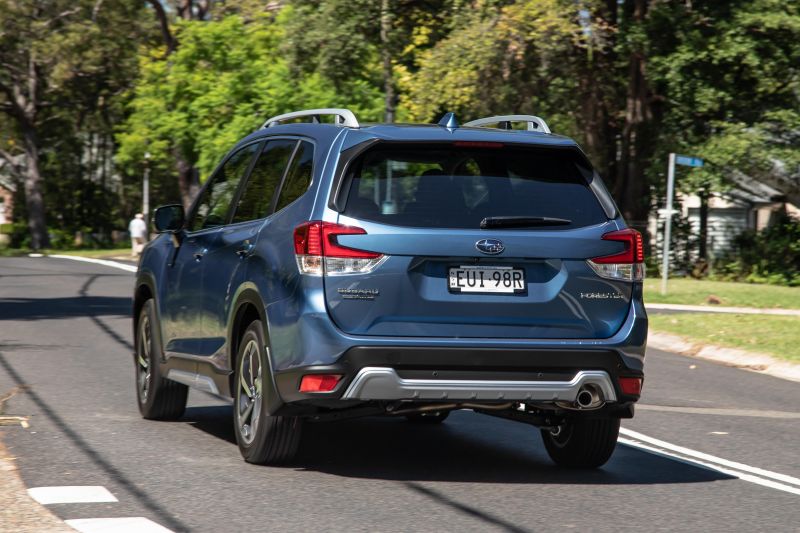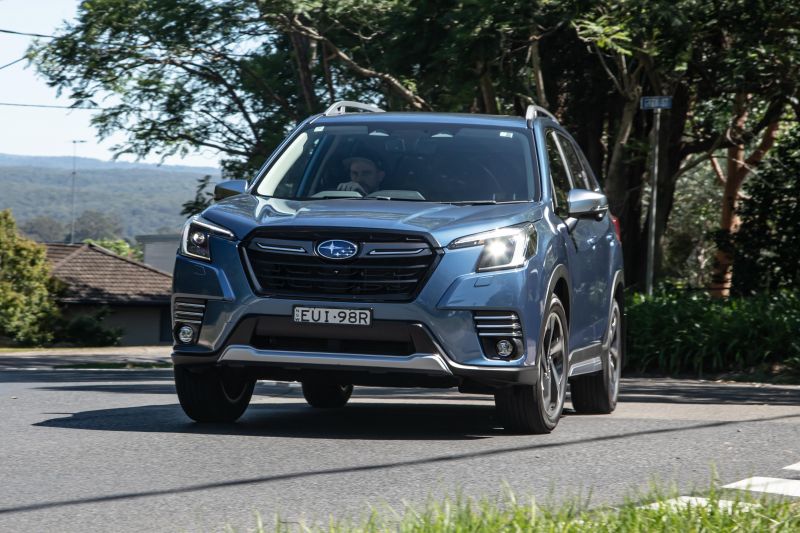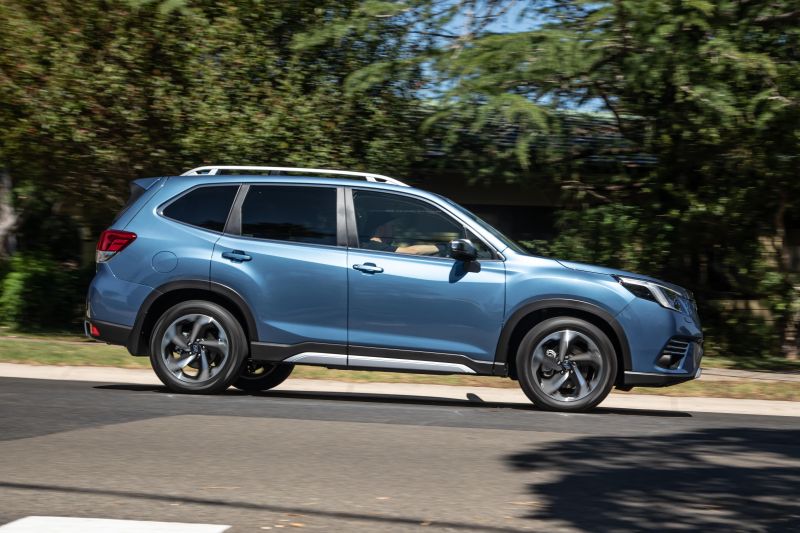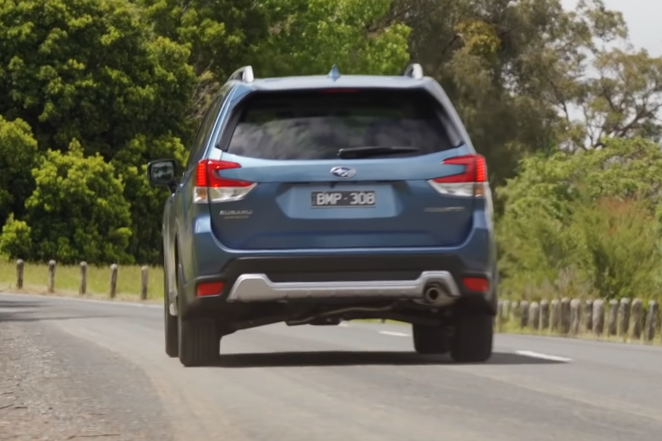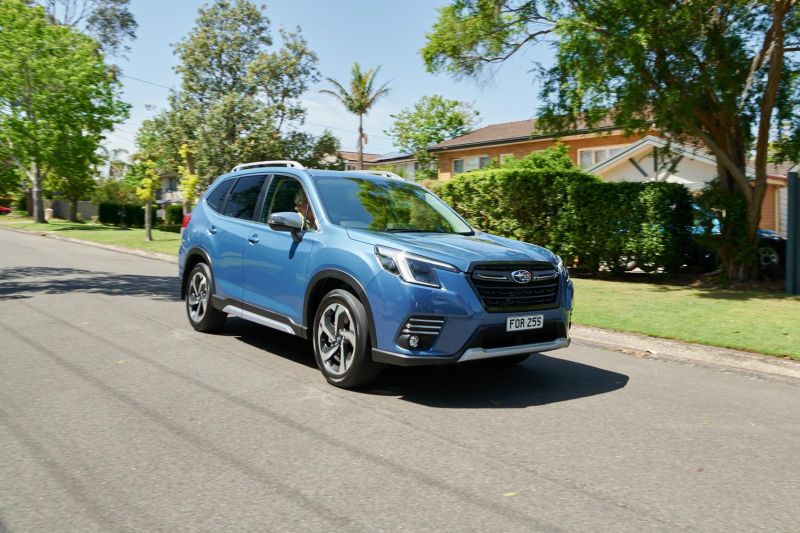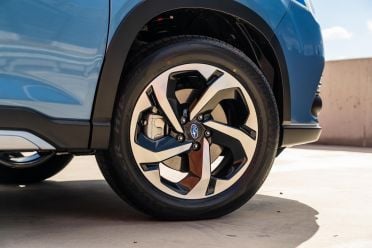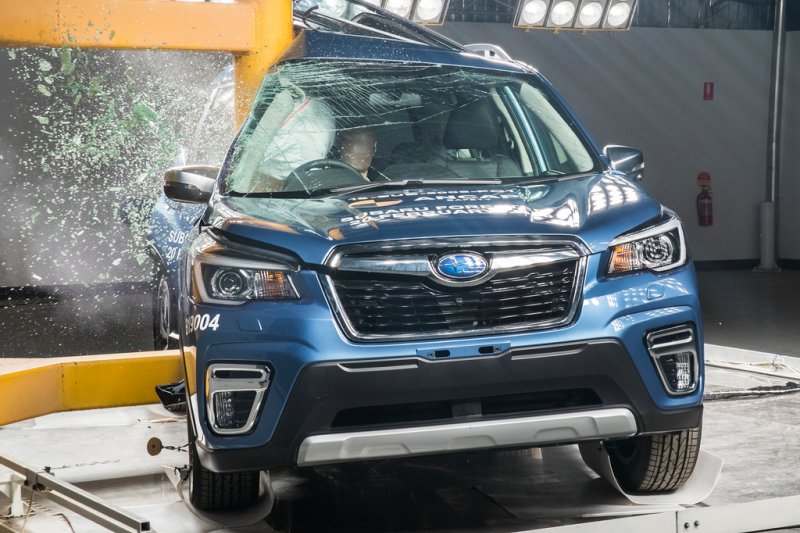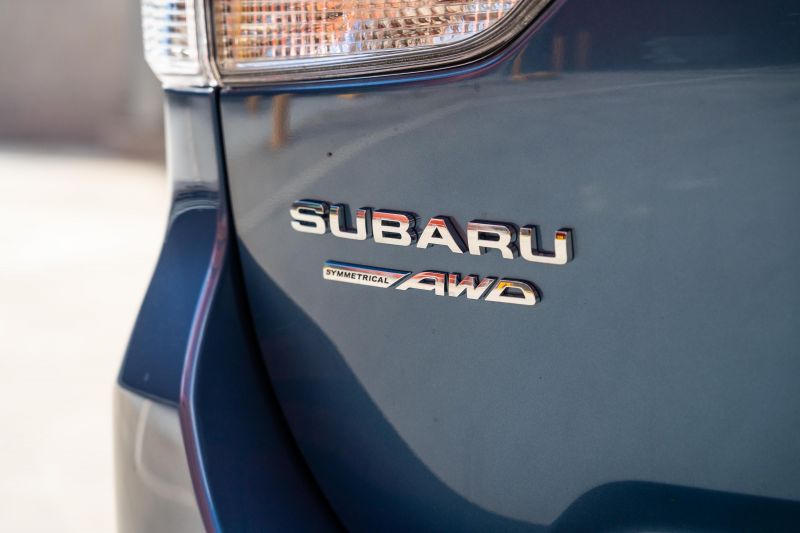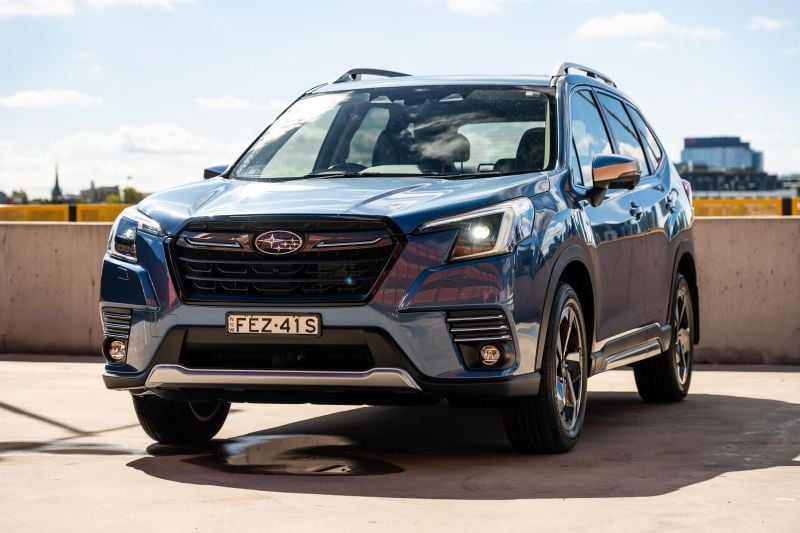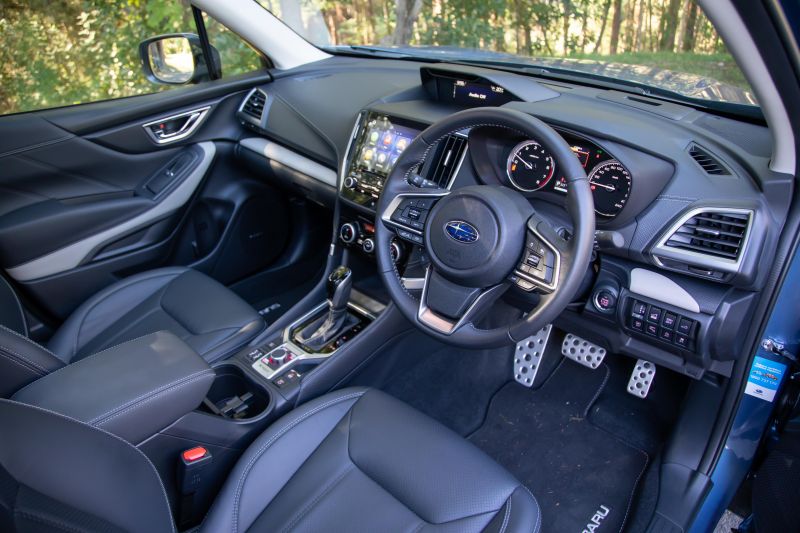The Subaru Forester is one of the vehicles that defined its segment.
Mid-sized SUVs are some of the hottest-selling new vehicles in Australia, and the Forester has been a staple for decades now.
For the first few generations the Forester, like the current Outback, was a lifted wagon – though for the last four generations it has looked more like a crossover SUV.
The current fifth-generation Forester has been on sale in Australia since 2019 and has looked largely the same inside and out since then. A minor facelift came in 2022.
The latest update for 2024 brought subtle changes including the removal of the CD player, black-painted rear spoiler and shark fin antenna, as well as LED (previously halogen) front fog lights. All variants also received a $800 price rise.
Late last year Subaru revealed the new, sixth-generation Forester in the US. It received tweaked exterior styling, as well as the company’s new 11.6-inch portrait touchscreen infotainment system, among other minor changes.
At this stage however Subaru Australia has yet to share when the new-generation Forester will arrive locally.
Is it worth grabbing one of these current-generation examples in what is likely its swan song year, or should you hold out for the new model? Read along to find out.
How does the Subaru Forester compare?
View a detailed breakdown of the Subaru Forester against similarly sized vehicles.

Subaru
Forester
How much does the Subaru Forester cost?
There’s a sprawling range of Forester variants on sale in Australia – on test is the flagship 2.5i-S AWD petrol.
2024 Subaru Forester pricing:
- 2024 Subaru Forester 2.5i: $38,690 (+$800)
- 2024 Subaru Forester 2.5i-L: $41,090 (+$800)
- 2024 Subaru Forester 2.5i Premium: $43,890 (+$800)
- 2024 Subaru Forester Hybrid L: $44,090 (+$800)
- 2024 Subaru Forester 2.5i Sport: $45,640 (+$800)
- 2024 Subaru Forester 2.5i-S: $47,140 (+$800)
- 2024 Subaru Forester Hybrid S: $50,140 (+$800)
Prices are before on-road costs
To see how the Forester compares with its rivals, use our comparison tool.
What is the Subaru Forester like on the inside?
If you’re expecting big changes inside the Subaru Forester’s cabin for 2024, you’re sorely mistaken.
Hopping into the Forester is easy thanks to the raised ride height synonymous with crossover SUVs. This is helpful for people with limited mobility, who can’t step too far up or down into a car.
Once you’re in it’s overtly clear you’re in a Subaru. All the switchgear feels very familiar if you’ve been in or owned a Subaru before, plus – I know this sounds strange – but the plastics and finishes also have a familiar smell.
As standard the Forester 2.5i-S comes with leather-accented upholstery, which in our tester was all black. There is also a two-tone platinum and black finish which is a touch more exciting, though will likely get dirtier quicker with kids.
Despite looking inoffensive and almost plain, the front seats are very comfortable. They offer electrical adjustment with plenty of thigh support, which is handy for those with longer legs like myself.
The front seats also offer heating which is helpful on cooler Melbourne mornings. I found on the highest setting they would get hot very quickly, making me reach for the button to turn it down.
Ahead of the driver is a leather-wrapped steering wheel that feels a lot rougher and harder-wearing than those of its rivals. This steering wheel is covered in a plethora of buttons which can be a little overwhelming at first, but the layout is logical and they have a satisfying clicky action when pressed.
Behind the steering wheel is a set of clear analogue dials for the revs and speed that sandwich a 4.2-inch digital instrument cluster. This setup really dates the car, but thankfully the dials and screen are easy to read, plus the digital instrument cluster shows plenty of information that can be cycled through to your heart’s content.
The digital instrument cluster works in tandem with a 6.3-inch multifunction display that shows more informative pages to be cycled through. The Forester is the last Subaru in the lineup to still have this setup, as all other models now have these integrated into larger portrait-oriented touchscreen infotainment systems.
Speaking of the infotainment system, the Forester comes standard with an 8.0-inch touchscreen that’s starting to look a little small in 2024. It’s also tilted awkwardly upwards which causes plenty of glare.
The touchscreen infotainment system appears to have a slightly lower resolution than the upper multifunction display. It’s not the crispest screen I’ve ever seen, though thankfully the user interface is simple and easy to navigate.
As standard the Forester comes with Apple CarPlay and Android Auto in wired form only. You’re required to plug in via a USB-A port ahead of the gear selector.
This placement for the USB port can be a little problematic unless you properly cable manage, as it can sometimes get tangled up around the gear selector. It would be nice if the USB port was in the glovebox so the cord could be tucked away nicely.
With my iPhone 15 Pro Max connected with the wired Apple CarPlay I didn’t experience any dropouts, which is to be expected.
If you’re out of phone service and still need to get yourself home, the Forester thankfully comes with TomTom-based in-built satellite navigation . It’s easy to punch in destinations and points of interest, though its interface is very dated.
For 2024 the CD player has been removed from under the touchscreen. The Forester was the last model in its segment to cling onto this media type.
Looking around, the cabin is very airy. All the windows are large which makes all-round visibility easy. There’s also a big sunroof in the S grades that’s not quite panoramic but does almost reach into the second row.
In typical Subaru fashion however the Forester does look a little traditional, which is a nice way of saying dated. There are plenty of buttons and also dials which are logically placed. It’s nice to have physical buttons and dials in the age of minimalism and moving key functions to the touchscreen.
I particularly like how logical and tactile the dual-zone climate control setup is. It’s really satisfying to change your set temperature, though the plastics used on the dials feel a little cheap.
There are some soft touches in high-touch areas including the armrests, dashboard, and where your knees sometimes rest. On the flip side there are still the inevitable harder finishes down lower.
I’m also not a huge fan of the piano black finish around the gear selector, which got very dusty and grimy after just a week of testing. Our tester was virtually brand new, but piano black finishes don’t take long to get scratched when cleaning.
Mounted prominently on the centre tunnel is the X-Mode dial, used to switch between off-road terrain modes. It’s a big dial that takes up a fair bit of real estate than it ought to, given it won’t be used for the majority of everyday driving.
The last thing I’ll mention before the second row is the eight-speaker Harman Kardon premium sound system, which is very well-tuned and makes the soundscape feel full.
Hopping into the second row is made easy thanks to the fact the rear doors open all the way to 90 degrees. This is incredibly helpful when you’re installing child seats, and need as much space as possible.
Speaking of child seats, the Forester has ISOFIX anchorage points on the two outboard seats, plus top-tether points on all three second-row seats.
Once you’re in the second row the space on offer is phenomenal. At a leggy 182cm I had oodles of leg-, head-, shoulder- and toe room behind my own driving position.
The outboard second-row seats, like the front seats, are very comfortable. They offer plenty of support and are somewhere I could sit on a long journey very easily.
The middle seat however is a little perched and small for adults. You’ll also need to attach the roof-mounted seatbelt which blocks rearward visibility a bit. It also needs to be unclipped if you want to load large items with the rear seat folded, which is a step you won’t need to take with rivals.
Second-row amenities are plentiful and include centre console-mounted rear air vents, USB-A ports, as well as a fold-down armrest with cupholders.
The Forester 2.5i-S has a power tailgate which opens quickly and quietly. Once the tailgate is open the aperture is wide and low, which makes loading things in easy.
The boot space itself is really generous. Subaru officially quotes a capacity figure of 498 litres, which expands to 1060 litres with the second row of seats folded.
There are plenty of hooks and nooks in the boot which makes securely storing smaller items a lot easier, as well as large levers to remotely fold the second-row seats.
Under the boot floor there’s a full-size spare wheel which is a crucial feature for those who live and travel in rural and regional areas.
What’s under the bonnet?
The 2024 Subaru Forester is available with petrol or ‘e-Boxer Hybrid’ powertrains. Our tester was fitted with the 2.5-litre naturally aspirated flat-four petrol engine.
| Model | Subaru Forester 2.5i-S AWD |
|---|---|
| Engine | 2.5L naturally aspirated flat-four |
| Power | 136kW (5800rpm) |
| Engine torque | 239Nm (4400rpm) |
| Transmission | Continuously variable transmission (CVT) |
| Driven wheels | All-wheel drive |
| Weight | 1576kg (tare) |
| Unbraked towing capacity | 750kg |
| Braked towing capacity | 1800kg |
| CO2 (claim) | 168g/km |
| Fuel economy (claim) | 7.4L/100km |
| Fuel economy (observed) | 8.5L/100km (270km mixed driving) |
| Fuel tank size | 63 litres |
| Minimum fuel requirement | 91 RON |
To see how the Forester compares with its rivals, use our comparison tool.
How does the Subaru Forester drive?
Starting up the Forester you’re acutely aware you’re driving a Subaru because it does the classic 2000rpm rev flare and idle when the engine is cold. It can be a little jarring if you’re not ready for it, but you quickly get used to it.
The engine will continue to idle high until it’s warmed up a bit, which doesn’t take long, or if you shift the car into gear. At this point, idle hovers at a more comfortable 1000rpm.
As you take off you’ll likely have a big surge of power. The accelerator in this car is quite touchy, and it tries to make the car feel more powerful than it is. There’s also no turbocharger, meaning it doesn’t have to wait for boost to come on tap.
The 2.5-litre flat-four cylinder petrol engine is tried and tested, and is far from the most inspiring powertrain. It has to be revved in order to unlock mediocre outputs, but thankfully the continuously variable transmission (CVT) is up to the task and flares the revs as needed.
If you press the accelerator a little harder or activate the Sport drive mode, the transmission will simulate seven pre-selected gear ratios to remove that droning noise synonymous with CVTs.
You might get the jump on most cars at the traffic lights thanks to the initial surge of power and revs, but they’ll come past you as the speed builds. The Forester isn’t about being powerful however, and instead is intended to be a comfortable and dependable chariot for the family.
Once you’re cruising around at low speeds, the revs die down to just above idle which is a key benefit of a CVT. This makes it much quieter in the cabin and you also save fuel.
Speaking of saving fuel, the Forester comes with an engine idle stop-start system that kicks in when you’ve come a complete stop. It’s not too intrusive like some rival systems can be, though it strangely doesn’t activate once the steering wheel is turned past a certain point.
The Forester’s steering is nicely weighted and has enough feel. It also errs on the lighter side which makes parking manoeuvres considerably easier.
As standard the entire range comes with reversing camera and rear parking sensors. Our 2.5i-S tester also adds front and side cameras.
It’s so strange Subaru hasn’t fitted this car with a proper surround-view camera, nor front parking sensors given it’s a family-oriented vehicle. Thankfully you’ve got almost every corner covered, however.
I particularly like how the side kerb-side camera is shown on the smaller 6.3-inch upper display to ensure you won’t scratch your rim when parallel parking.
Around town the Forester’s suspension is comfort-oriented and on the softer side. Continuous bumps and imperfections are soaked up nicely, though harder singular bumps do unsettle the car.
It should come as no surprise the Forester isn’t very dynamic. It leans in the corners and doesn’t feel very composed if you come into a bend with a bit too much heat. This car much prefers being driven sedately.
Building up speed is where this engine starts to come undone. You really need to push the Boxer motor to get the Forester up to freeway speeds.
Without much hesitation the CVT will flare the revs to and above 3000rpm which just a bit too high for my liking. It’ll also frequently flare to maintain 100-110km/h if the car detects even a whiff of an incline.
The engine doesn’t have the most thrilling note ever but it does buzz away with that classic off-beat Boxer thrum. There’s also a bit of wind noise around the side mirrors at higher speeds.
This aside, the Forester is a comfortable cruiser that’s able to soak up freeway kilometres very effortlessly. The larger Outback takes this a whole different level though, and would personally be my pick for highway driving.
On the safety front the Forester has a driver attention monitoring system that’s generally pretty good, but can sometimes beep and bong when you’re using the climate controls, for example. I suppose that’s what the system is designed to do, but that doesn’t stop it being annoying.
The Forester’s camera-based adaptive cruise control system also isn’t the smartest. It will fairly regularly dip above and below your set speed when met hills, which isn’t very speed camera-friendly.
When the stereo cameras first detect a car ahead when cruise control is activated it will slow the car down which is awkward and not very natural. After doing this the car will then proceed to get a little too close to the car ahead if it’s travelling slower.
You can negate this by increasing the distance but this just causes the Forester to brake even harder when it first detects a car. The newer Outback is smoother and more intuitive when adaptive cruise is active.
Another infuriating element of the adaptive cruise control system is it will beep when it first detects and a car ahead of you, and then beep yet again when it longer detects a car. If you’re travelling on a busy highway be prepared to have your music cranked because it doesn’t take long for this beep to get annoying too.
There’s a lane-keep assist function that can be activated by pressing a button on the steering wheel, but you’re better off not pressing it. This system isn’t the best, even with decently marked roads, as it’s very forceful with its steering inputs and it bounces between the lane markings.
Lastly, the entire Forester range comes with bright LED headlights that are fantastic. They have an active cornering function that physically turns the headlight beam when you steer which helps illuminate around bends.
Almost all variants besides the base model also get adaptive high-beam, which is helpful when you’re travelling on dimly lit rural and regional roads at night and want to keep your high-beams on as much as possible.
What do you get?
The 2024 Subaru Forester is available in a sprawling range of variants. On test here is the flagship 2.5i-S variant which sits alongside the similarly specced Hybrid S.
Forester 2.5i comes standard with the following:
- 17-inch alloy wheels
- Automatic, active cornering LED headlights
- LED front fog lights (NEW)
- Rain-sensing wipers
- 6.3-inch multifunction display
- 8.0-inch touchscreen infotainment system
- Wired Apple CarPlay, Android Auto
- DAB+ digital radio
- 6-speaker sound system
- Dual-zone climate control
- Paddle shifters
- Leather-wrapped gear selector
- Leather-wrapped steering wheel
- Black or Platinum/Black fabric upholstery
Forester 2.5i-L and Hybrid L add:
- Adaptive high-beam
- Rear AEB
- Driver monitoring system
- Front and side cameras
- Heated front seats
- Black premium cloth upholstery (Hybrid L)
Forester 2.5i Premium adds:
- 18-inch alloy wheels
- Power tailgate
- Satellite navigation
- Black or Platinum/Black premium cloth upholstery
- 8-way power front seats with driver’s memory
Forester 2.5i Sport adds:
- Sunroof
- Auto-dimming rear-view mirror
- Orange and gunmetal interior highlights
- Grey/Black water-repellent cloth upholstery
Forester 2.5i-S and Hybrid S add:
- 8-speaker Harman Kardon sound system
- Black leather upholstery
- Platinum/black leather upholstery (2.5i-S only)
Is the Subaru Forester safe?
The Subaru Forester earned a five-star ANCAP safety rating in 2019.
It scored 94 per cent for adult occupant protection, 86 per cent for child occupant protection, 80 per cent for vulnerable road user protection, and 78 per cent for safety assist.
All 2024 Subaru Forester models come standard with:
- Autonomous emergency braking (AEB)
- Blind-spot monitoring
- Rear cross-traffic alert
- Lane departure warning
- Lane keep assist
- Lane centring
- Autonomous emergency steering
- Adaptive cruise control
- Reverse camera with washer
- Rear parking sensors
All bar the base 2.5i come standard with a facial recognition camera to detect driver drowsiness or distraction, as well as rear AEB and front and side cameras.
How much does the Subaru Forester cost to run?
The 2024 Subaru Forester is covered by a five-year, unlimited-kilometre warranty; plus an eight-year and 160,000km warranty for the Hybrid’s lithium-ion battery.
Logbook servicing is required every 12 months or 12,500km, whichever comes first. Subaru also offers three- and five-year servicing plans.
For non-hybrid models they cost $1387.25 and $2674.64 respectively, while the Hybrid’s plans cost $1398.62 and $2693.61.
CarExpert’s Take on the Subaru Forester
If it ain’t broke, don’t fix it – that really sums up the Forester, and arguably Subaru as whole.
This mid-sized SUV has received very minor changes over the years, and this latest update is testament to that. The new sixth-generation model, which is yet to receive a clear local introduction date, also appears to be following a very similar path.
The Forester is really approachable and has virtually no learning curve. Sure it doesn’t blow any of its rivals out of the water in terms of outright performance, dynamism, or fuel consumption; but it’s dependable, comfortable, and practical.
Some of my favourite attributes about the Forester aren’t even in the first row, which shows how family-oriented this vehicle is. I love how the rear doors open to 90 degrees, and how large and wide the boot opening is.
However, in 2024 this car is looking very dated inside. The cabin is an airy and button-heavy place to be, while the combination of the small 8.0-inch touchscreen infotainment system and 6.3-inch multifunction display is a hark back to Subarus of old.
The Forester desperately needs to adopt the 11.6-inch portrait touchscreen infotainment system setup almost every other current Subaru model has. Thankfully this is one change that has been made with the new sixth-generation model due next year.
This isn’t enough to justify holding out for the new-generation model to arrive, however. The current model has a lot to offer, though before signing on the dotted line I’d recommend checking out some of the competition because the mid-size SUV segment moves really quickly.
Click the images for the full gallery
MORE: Buy a Subaru Forester
MORE: Everything Subaru Forester
















